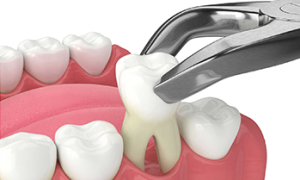Tooth extraction is a common dental procedure that many people face due to decay, infection, or overcrowding. Whether you’re preparing for a necessary extraction or just curious about the process, understanding what happens before and after the procedure can help ease anxiety and promote a smoother recovery. Below is a detailed look at the key points you should know.
Before the Extraction
- Consultation and Evaluation:
- Your dentist will review your dental and medical history.
- X-rays or scans are often taken to assess the tooth’s position and the condition of surrounding bone.
- Pre-Procedure Planning:
- Discussion of any medications or allergies to determine the best anesthesia and pain management plan.
- Instructions may be given regarding eating, drinking, or taking prescribed medications prior to the procedure, especially if sedation is involved.
- Anesthesia and Sedation Options:
- Local anesthesia is typically used to numb the area.
- For more complex cases or for patient comfort, sedation options may be discussed.
- Setting Expectations:
- The dentist will explain the extraction process, potential complications, and post-operative care.
- This conversation is your chance to ask questions and understand each step.
During the Procedure
- Numbing the Area:
- The targeted area is carefully numbed to ensure minimal discomfort.
- The Extraction Process:
- Depending on the tooth’s condition, the dentist uses specialized instruments like forceps or, if necessary, surgical tools for impacted teeth.
- The procedure is typically swift, with modern techniques ensuring it is as stress-free as possible.


After the Extraction
- Immediate Aftercare:
- Bite gently on a gauze pad for about 30 to 45 minutes to help form a blood clot and control bleeding.
- Managing Pain and Swelling:
- Over-the-counter pain relievers or prescribed medications can help manage discomfort.
- Ice packs applied externally can reduce swelling in the initial hours following the extraction.
- Post-Procedure Instructions:
- Avoid rinsing your mouth vigorously, using straws, or smoking, as these actions can disrupt the blood clot and lead to complications like dry socket.
- Stick to a soft food diet and maintain gentle oral hygiene around the extraction site.
- Monitoring Your Recovery:
- Keep an eye out for any signs of infection, unusual pain, or prolonged bleeding.
- Follow up with your dentist if you notice any complications or have concerns during the healing process.
By following these detailed before and after care guidelines, you can help ensure a safe procedure and a smooth recovery. Remember, every patient’s experience is unique, so it’s important to adhere to your dentist’s specific recommendations for the best possible outcome.


